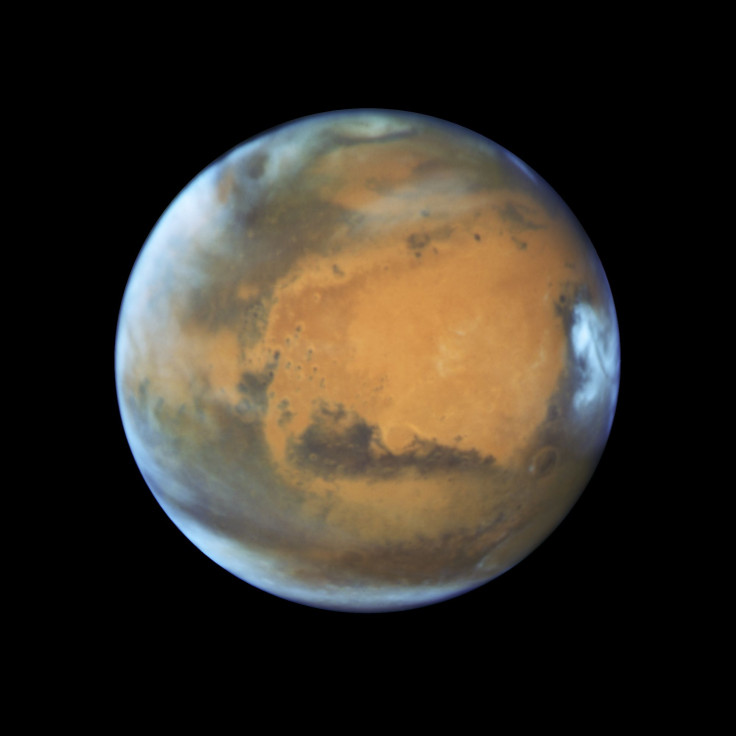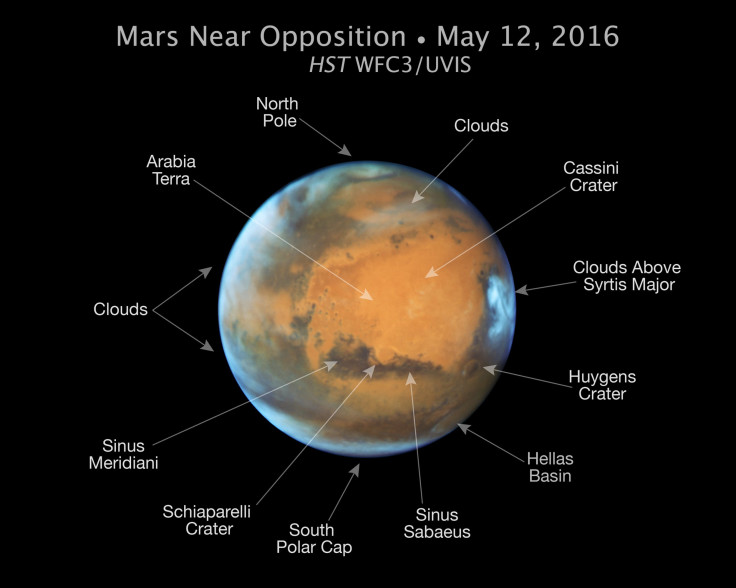Mars’ Russet Surface, Polar Ice Caps Captured In Stunning New Hubble Photograph

NASA’s Hubble Space Telescope, credited with capturing some of the most detailed and magnificent images of cosmic structures, has snapped another masterpiece. This time, the photograph taken by Hubble’s Wide Field Camera 3, reveals, in stunning detail, the surface of our friendly neighborhood planet Mars.
The image, captured when Mars was just 50 million miles from Earth — a mere stone’s throw away in the cosmic scale of things — shows russet Martian deserts pockmarked with craters and bright frosty polar caps shrouded, in some regions, in a thin haze of clouds.
The largest structure clearly visible in the photograph is Arabia terra — a region fans of Andy Weir’s “The Martian” would be intimately familiar with. It’s the vast upland region in northern Mars covering an area of about 2,800 miles that the book’s protagonist Mark Watney traverses during his journey to the Schiaparelli crater.
“When our hero travels into Arabia Terra it is described as much rockier than Acidalia, but the opposite is generally true: much of Arabia is dust mantled and smooth at the scale of a rover,” NASA helpfully explained in the run-up to the release of the book’s movie adaptation.

Other structures that can be seen in the photo are Sinus Sabaeus and Sinus Meridiani — long dark features south of Arabia Terra — and the Syrtis Major Planitia — one of the earliest features identified on the surface of the planet.
“An extended blanket of clouds can be seen over the southern polar cap. The icy northern polar cap has receded to a comparatively small size because it is now late summer in the northern hemisphere,” NASA said in a statement accompanying the photograph. “Hubble photographed a wispy afternoon lateral cloud extending for at least 1,000 miles at mid-northern latitudes. Early morning clouds and haze extend along the western limb.”
This observation was made just a few days before the red planet and our pale blue one enter a state of opposition — when the Sun and Mars will be on exact opposite sides of Earth. The opposition on May 22 would be followed by Mars’ closest approach to Earth on May 30, when it would be at a distance of just 46.8 million miles — the closest it has been to Earth in 11 years.
© Copyright IBTimes 2024. All rights reserved.





















